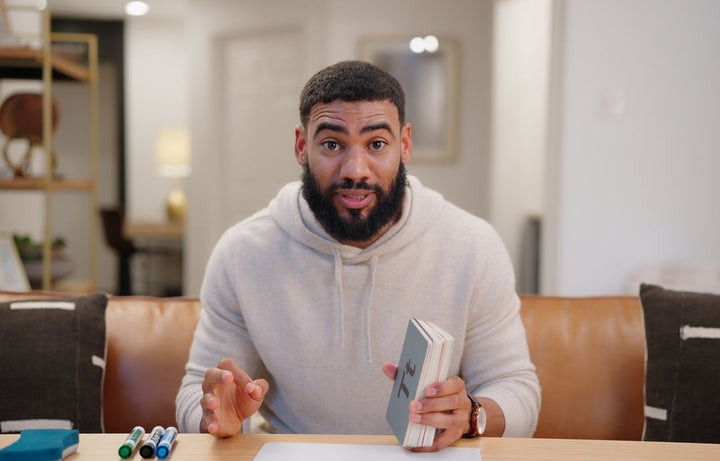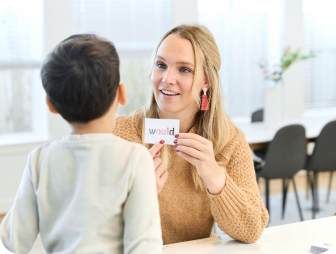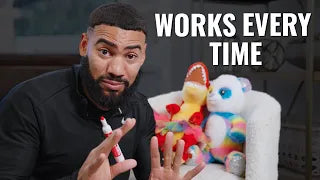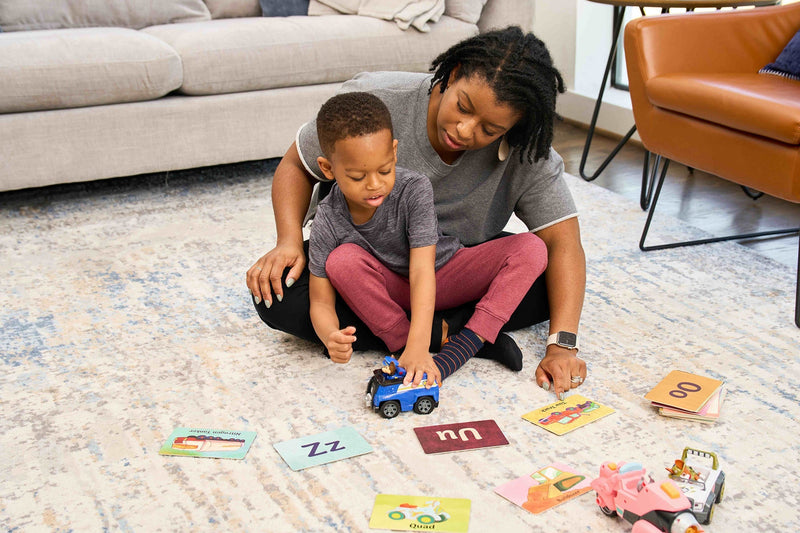If you're a parent with multiple kids, you're probably wondering: "Should I work with them together at the same time, or try to give each of them some 1:1 attention?"
And I get it. As a teacher, I asked myself this question on a daily basis. And the answer (like most teaching decisions) really depends on your situation.
So let's break this down for you so you can make the best possible decision about how to approach learning time with your little ones.
1 + 1 ≠ 2
To understand the impact of how we spend our learning time, let's take a look at an example where we have 2 children working together for 10 minutes:

Now let's look at another option: take that same 10 minutes and break it down, so each child gets 5 minutes by themselves.

At first glance, the first option looks like it's the best. Each child gets 10 minutes of instruction, and 10 minutes is better than 5 minutes, right?
Well, not necessarily.
Despite the first example showing 10 minutes of instruction per child, it might actually look more like this:

For the sake of this example, let's say that child 1 is learning letter sounds while child 2 is working on blending.
Because child 2 already knows their letter sounds, they won't actually be learning the whole time; they'll only be learning when it's time to practice blending. And the same thing applies to child 1, who may not be able to keep up with the blending.
TLDR: Even though it looks like working with your little ones together will provide both of them with more learning time, the reality is: unless BOTH kids are working on the EXACT same skills, then the quality of the time spent probably won't be as good.
Time spent on task is much more important than the total amount of learning time.
What Is The Quality Of The Learning Time?
Now that we've thought about how much learning time your little ones would have when working together or 1-on-1, let's think about what the quality of that learning time would look like.
Attitude Toward Learning TimeLet's say you're working with two children. More than likely, they have different learning NEEDS and SPEEDS (even if they're around the same age).
So let's say you're the child who is learning slower: chances are, you're going to notice that your sibling/ cousin/ friend is farther along in their reading, which could make you feel self-conscious or lead to a lack of confidence.
On the flip side, if you're the child who is ready to learn more or learn faster, you will probably get bored quickly.
Either of these children could end up feeling resentful toward learning.
Because if one child always feels like they're the one who's behind in their reading, they might begin to associate learning time with discouragement.
And likewise, the child who is further along, might become less engaged- or even frustrated- with the learning time.
Individual Behavioral NeedsEvery child behaves differently. We know this.
And any parent or teacher can tell you that dealing with one child's behavior challenges will look different than dealing with the behavior challenges of another.
So if you can work 1-on-1 with a child while the other is engaged in something else, you can focus on that child's behavior needs without having to balance two at once. That will most likely increase both the quality of the learning time and the amount of patience you have while working with them!
Relationship BuildingOne of the biggest benefits of working 1:1 with your little one is the quality time it gives the two of you together.
And I hear this time and time again with families who take my courses. They appreciate the dedicated 1:1 time spent with each child. So even if it's not a lot of total time, the time spent watching them grow and develop and struggle and then understand: goes a long way for both of you.
Optimal vs. Practical Learning Time
By now, I think it's pretty clear that I believe 1:1 time with your little ones will be more beneficial than time spent working together. Because unless they are at the exact same reading level (and even then), they'll probably get more benefits from working with you by themselves (even if that means they get less learning time overall.)
"But Spencer... I simply do not have the time."
I hear you. Being a parent is tough. There is rarely enough time in the day.
And while spending 1:1 time with each child is optimal, it isn't always what's practical.
So you know your schedule better than I do. And at the end of the day, only you know what is realistic for you and your family. Maybe you're working multiple jobs and 5 minutes is literally the most time you can spare. Maybe there isn't a way to keep the other children safely occupied when you're working 1-on-1 with another.
If that's the case, I would much rather you work with both children at the same time than not work with either of them at all. Something is almost always better than nothing.
As parents, there will always be things where we have to balance what is optimal vs. what is practical, and this is another one of those times.
Make Learning Time a Priority
I will never tell you that finding the time to work with your little ones 1:1 is easy. Because it's not.
As a teacher, finding time to work 1:1 (or even in small groups) with my students was incredibly challenging. Often, I had to pull them out of other classes, spend time before/after school, or give up my planning time just to get a few minutes with them in smaller groups.
But what I will tell you is that it will always be worth it.
That 1:1 time will not only be good for your relationship with your child but will be incredible for their learning and growth.
And that's why some kids learn at home much better than at school with trained professionals: because you can give your child exactly what they need in a way that teachers and schools simply can't.
So I hope this blog post gave you a helpful way to think about dividing up learning time with your little ones. If you're still feeling overwhelmed with getting started with your children, you're definitely not alone. I have a fantastic free workshop that's given thousands of parents the tools they need to get started.
Still, have questions? Jump in the free training and let me know! There's a live chat where we can talk more.









